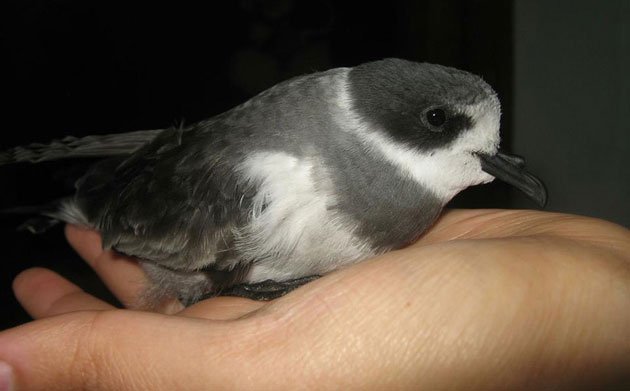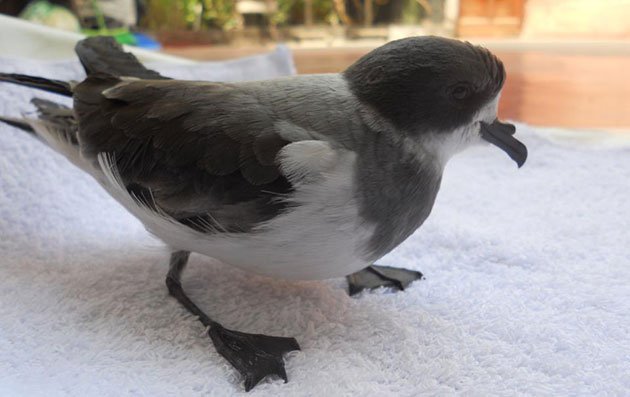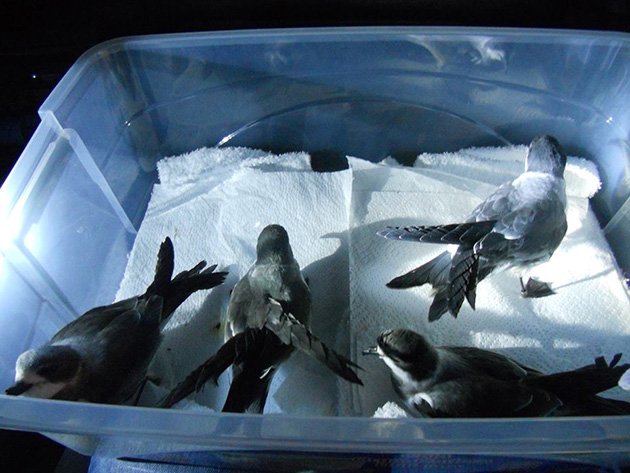
The Hornby’s Storm-petrel (Oceanodroma hornbyi) is a fairly common bird along the coast of Peru and Chile. Most, if not all pelagic birding trips in the region record this species, often by the hundreds. But as common as they may be, nobody knows where they nest.
The Hornby’s (or Ringed) Storm-petrel occurs along a relatively narrow band on the Pacific Ocean. There is no doubt they nest somewhere along the cost of Peru and Chile. The rocky islands near the coast would be the obvious nesting grounds as they are for many other Humboldt seabirds. But these island are well known, visited, and don’t have the caves and burrows storm-petrels need to nest. There is growing evidence that the storm-petrels nest inland.
Photo : Projecto Golondrina de la Tempestad de Collar
Hornby’s Storm-petrels are frequently found disoriented in the city of Lima. Pioneer ornithologist Maria Koepcke reported finding Hornby’s Storm-petrels as far back as 1964. Whether these are transient birds flying to the Andean Mountains to their breeding grounds or back, is yet to be determined. There is evidence that this may be the case. Birds have been found in cities as for inland as 130 km from the Ocean. Also Birdlife International reports that mummified adults and fledgling Hornby’s Storm-petrels have been found up to 50 km inland and 1,500 m above sea level along the Atacama Desert.
Recently rescued storm-petrels. Photo: Projecto Golondrina de la Tempestad de Collar
The months of May, June, and July are when most Hornby’s Storm-petrels show up in the coastal cities of Peru. Some birds get disoriented by the city’s bright lights and are knocked off-course. They wind up in backyards, balconies, and rooftops every morning. People don’t know what to do with them and often feed them store-bought bird food. Fortunately, local veterinarians and biologists have formed a group that rescues storm-petrels and ensures that as many birds as possible make their way back to sea before it is too late. This group’s records constitute valuable information to eventually be able to track these birds down to their breeding colonies somewhere in the Andean Mountains.
See more about the Hornby’s Storm-petrel rescue group on their Facebook page: http://www.facebook.com/ProyectoGolondrinaDeLaTempestadDeCollar













Leave a Comment